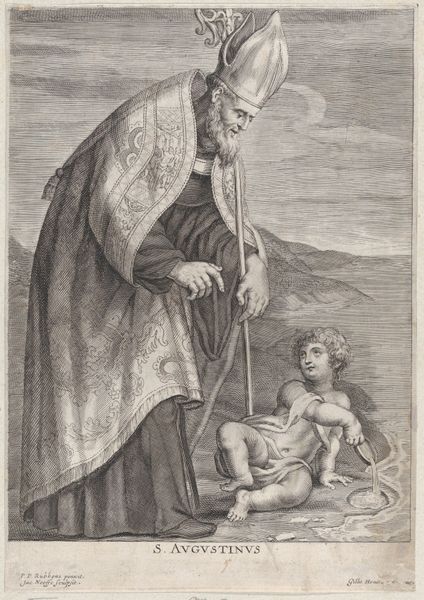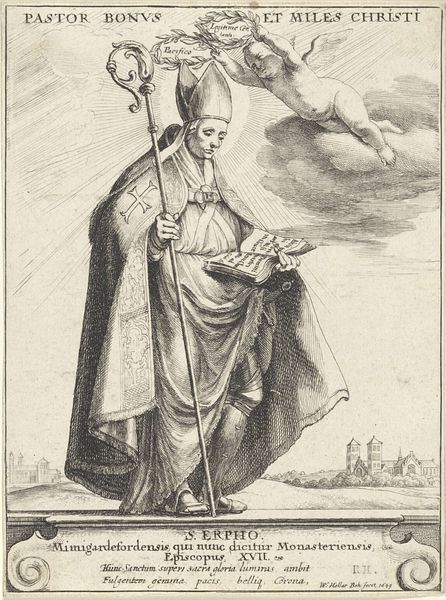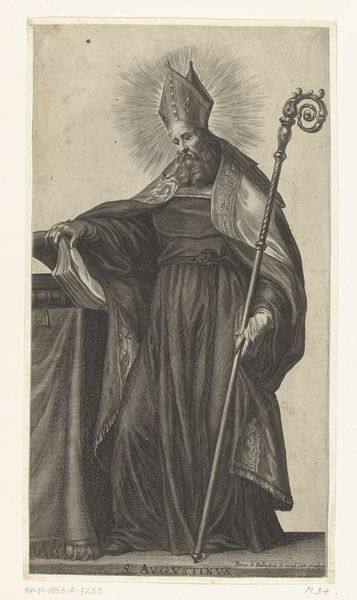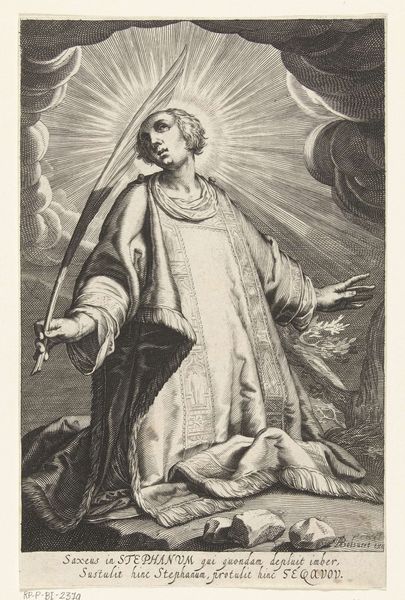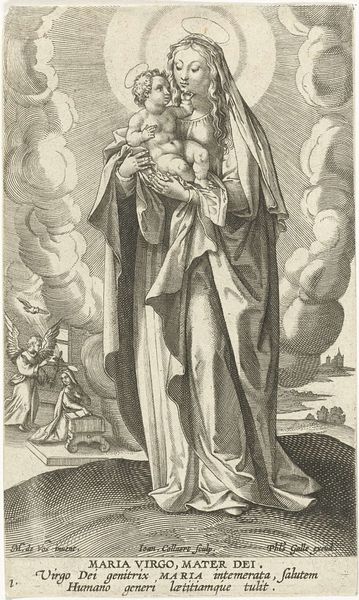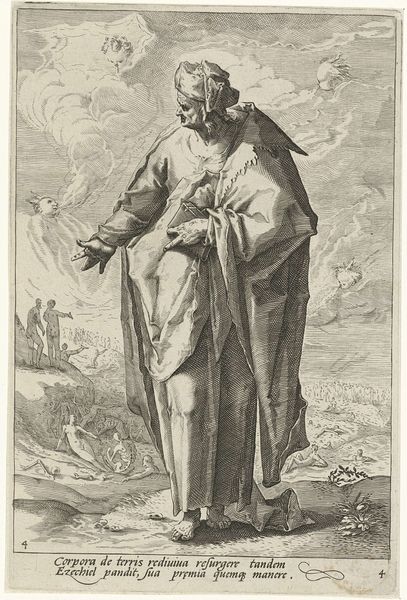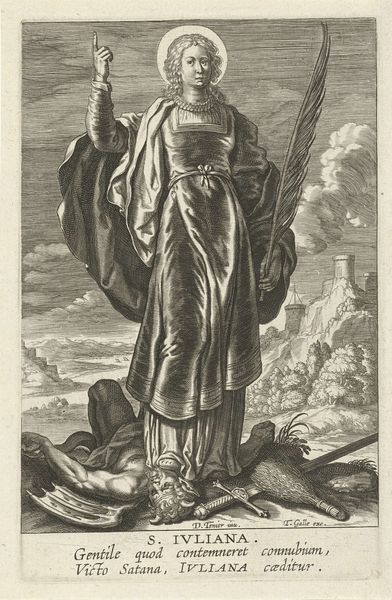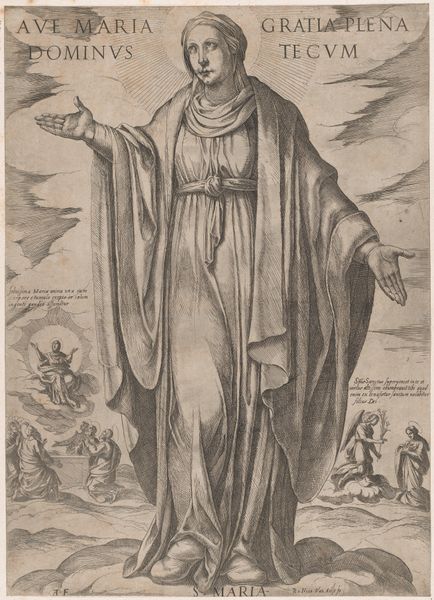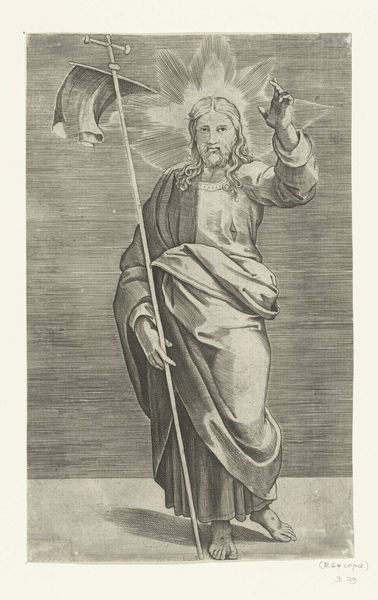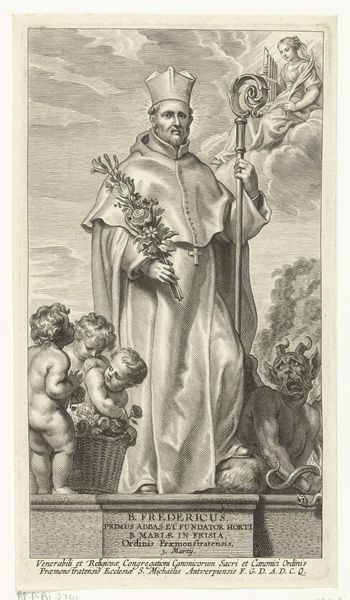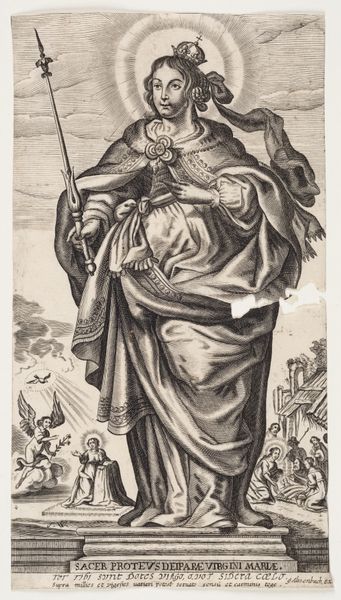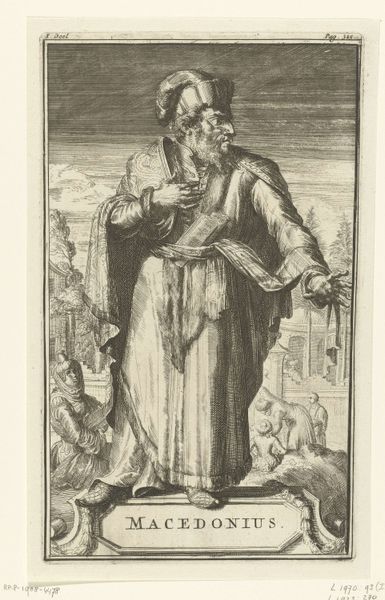
print, pen, engraving
#
baroque
# print
#
figuration
#
pen
#
portrait drawing
#
history-painting
#
engraving
Dimensions: height 490 mm, width 372 mm
Copyright: Rijks Museum: Open Domain
Curator: Welcome. Before us, we have Alexander Voet’s engraving, “H. Augustinus,” created sometime between 1662 and 1681. Note its presence here at the Rijksmuseum. Editor: It strikes me as incredibly theatrical, this image. The saint dominates the composition with his grand robes, casting a somewhat dubious eye on the strange little figure by the sea. Curator: Precisely. Let's consider the organization of forms. Observe how Voet uses hatching and cross-hatching to establish tonal variation and texture. See how Augustine, rendered meticulously, juxtaposes against the vast backdrop, establishing dynamic tension and balance. Editor: But the context is equally vital. We're seeing Augustine, a theologian and philosopher, encountering a child who, according to legend, was attempting to pour the ocean into a small hole. The child represents the futility of understanding the Trinity through human reason alone. Curator: Certainly, the narrative element is present, however the technical achievement is really stunning. Note the varying densities of the lines, crafting luminosity in fabric and dramatic depth in the clouds behind them. The material qualities create the visual spectacle. Editor: And consider what the figure of Augustine means to 17th-century viewers grappling with faith and reason during a period of significant political and social upheaval. He serves as an anchor, guiding audiences through tumultuous waters with a spiritual foundation. Curator: You're highlighting Augustine as a symbol amidst cultural transitions. From my perspective, the way light cascades upon the fabric creates dimension, the careful details contribute to the creation of complex geometric figures that give it movement and rhythm. Editor: So, Voet has really captured a moment rife with symbolism here. Both in Augustine’s life, but as a reference for that period. His legacy intersects not just with theology, but also with debates about the nature of knowledge and spiritual insight. Curator: It's a testament to the rich relationship of technique and symbol—one cannot discount Voet’s masterful manipulation of light, line, and form, using a restrained but brilliant arrangement that generates a captivating vision. Editor: Absolutely. Voet invites viewers to consider how such legacies permeate art, theology, and philosophy. A cultural dialogue.
Comments
No comments
Be the first to comment and join the conversation on the ultimate creative platform.
